Eurail Passes are famous as a way to save money while exploring Europe, but they are also confusing and often misunderstood. They are still an amazing money-saving tool for certain types of travelers, and not a wise idea for most others. Before Europe introduced dynamic rail pricing (like airfares, where the price varies depending on when you buy it), a Eurail Pass was an easy way to save money since all tickets had fixed prices that were generally fairly expensive. These days most travelers can save far more money just by buying their train tickets at least a few weeks in advance.
That said, Eurail Passes are still great for longer trips and especially for people who like to make plans as they go. Dynamic rail pricing made advanced tickets much cheaper, but it also made last-minute tickets MUCH more expensive. Below we will discuss Eurail Passes and whether they are a good idea for your trip or not.
Disclosure: This is a reader-supported website and some of the links are affiliate links where a small commission is paid to help keep this site going.
Note: This article was written in 2012 and has been continuously updated since then, so all information is current as of April, 2024.
Eurail 2024 changes: New countries and a mobile version

Aside from that it’s just the normal fact that they have updated the timetables as of December 2023 and have a few promotions going on, but those usually don’t happen over the busy summer season.
Eurail passes are now available in a mobile version
Until very recently, Eurail Passes were only available in paper form and they were quite confusing at first. You’d get a pass with a series of empty boxes on it and you’d need to enter your trip before you’d use your pass each day and then have the first conductor verify it. If you lost your ticket (and this was not uncommon), it was a whole ordeal to attempt to get a replacement.
Again in 2024 Eurail offers a fully mobile version that is delivered instantly to your mobile device with no delivery fee. And if you somehow lose your phone, you can resume using your Pass on your replacement with no extra headache. This is MUCH more convenient in every way and as long as you can keep track of your phone you’ll always have your train pass handy.
If your trip will be 2 weeks or less, a Eurail Pass probably won't be worth it

Eurail Passes are ideal for travelers on longer trips, and especially those who don’t want to plan all of their destinations and dates far in advance. If you have your itinerary pretty much planned out and you don’t require much flexibility, you’ll be far better off just locking in your dates and buying your train tickets as early as you can. Again, they can be surprisingly cheap if you buy 2 to 4 months out.
If you are age 27 or younger, a Eurail Pass is probably worth it

With this in mind, if you are lucky enough to still be 27 or younger, you should seriously think about getting a Eurail Global Pass Youth, partly because the sense of freedom instantly gets more expensive at age 28. The age cutoff was 25 until recently, so this change is a great deal for anyone who will be 26 or 27 at the start of their trip.
You aren’t guaranteed to save money by buying a Youth Eurail Pass, but chances are good that you WILL save money and you’ll definitely save a lot of hassle as well. Especially now that Eurail Passes come in a mobile form, it’s even that much more convenient to just hop aboard any train that is about to leave the station and not worry about buying or even having a ticket. Especially for young people, it can be really fun and exhilarating to literally just walk into a train station with your backpack and look at the departure board and then decide where to go at that moment.
If you are age 60 or over, a Eurail Pass could also be great value
Another fairly recent change is that anyone who is 60 years or older at the start of the use of a Eurail Pass now gets 10% off the normal adult fare. That new discount is going to make this a great value for many travelers who might have been on the fence about buying a full-price pass before.
>>>Check prices on Eurail Passes
If you are planning on traveling in 1st Class anyway, a Eurail Pass is probably worth it
Most 2nd Class trains provide similar comfort and legroom to Business Class airline seats, or at least close enough, so for most people it’s not worth the added expense for 1st Class. However, if you are rich or elderly or fear contact with strangers, a 1st Class Eurail Pass is probably worth it no matter what.
Not only do you get much more comfort and legroom in 1st Class, with only 3 seats across instead of 4, but there is another advantage to 1st Class on European trains. Since it’s mostly business travelers and wealthy people traveling in 1st Class, the carriages are almost always mostly empty except in the mornings and late afternoons between large cities. In 2nd Class the only available seats might be two seats in an 8-seat cabin with all the other seats taken up by a loud family or a group of rowdy friends. In 1st Class you are all but guaranteed a peaceful ride, and usually plenty of empty seats from which to choose.
A hidden Eurail Pass benefit: Making extra stops on travel days for free
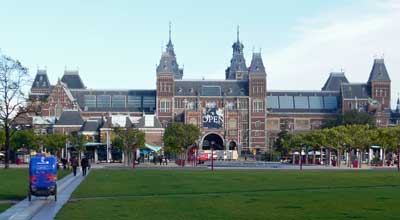
Brussels in particular is one I recommend a short stop in because the small historic center around what they called the Grand Place is amazing and gorgeous, while the rest of the city is rather boring by European standards. With a Eurail Pass you can jump off the train in Brussels and explore the city center for a few hours (luggage storage is cheap and easy) and maybe have lunch, and then hop on a later train to complete your journey to Amsterdam. There are opportunities like this on many if not most trips between larger cities, and if you buy the point-to-point tickets you have to stay on the train you booked.
Another example is the high-speed train between Barcelona and Madrid, which takes about 2.5 to 3 hours in each direction. There are some interesting cities in between, but in this case you could take a morning train from Barcelona to Madrid and then check into your accommodation, and then hop on another train from Madrid to Toledo, which takes about 30 minutes and costs €14 each way. Toledo is a historic and fascinating town, but it’s also pretty small and you can explore the main sights in an afternoon. With a Flexi Eurail Pass where you buy a certain number of travel days, you can save more money by adding on these sorts of nearby stops on travel days.
If you'll be touring major cities within ONE country, a single-country pass might be perfect, and Second Class passes are available for all ages

Single-country passes are still available and they MIGHT be good value for you, but it depends on which country and how much traveling you’ll be doing. If you plan on going all over a larger country such as Germany, France, or Spain, and especially if you like to make plans as you go, a Single-country pass for one of those might be your best deal. On the other hand, smaller countries (such as the Netherlands) or countries where train tickets are already fairly cheap (such as Italy) might be harder to get value out of. Long story short, for single-country passes you really need to check fares of the places you plan on going and see how they add up compared to the pass.
>>>Check prices for Single Country Passes
Eurostar (between London and Paris or Brussels or Amsterdam) tickets are now included for Eurail Pass holders for a €30 reservation fee
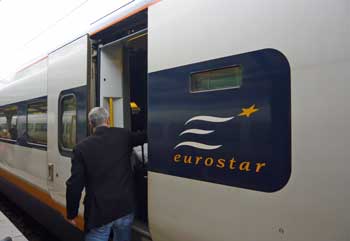
Our recent tests show that Eurostar fares one-way from London to Paris can be as low as €49 if you book about 3 months out, or as expensive as €214 for the same seat if you wait until the day of travel to buy. Round-trip/return tickets can be even cheaper if there is a promotion running.
>>>Check Eurostar prices
If you are on a really low budget, a Eurail Pass isn't a good idea
Here’s the thing. As we’ll discuss below, there are many potential benefits to Eurail Passes, and they will often save you money, but they do cost a lot and they only really save you money when traveling in the more expensive countries.
So let’s say you have a flight to Rome and then US$2,000 to last you a month after you arrive. Buying a Eurail Pass before you go would help you see a lot in that month, but you’d practically need to sleep in parks for your funds to last the whole time. You’d be better off moving slowly in the southern countries, or just in Italy itself, as a way to have the best holiday on your budget. You might also be tempted to use a Eurail Pass mostly on night trains so you can save the cost of a hotel or hostel, but those aren’t ideal for most of us.
The cheapest way to get around Europe by rail is to buy all train tickets online at least a couple months in advance. The fares are low, but they are non-refundable and non-changeable. See how far in advance you should buy train tickets to get those attractive fares.
If more than a little of your travel will be in eastern Europe, a Eurail Pass isn't a good idea
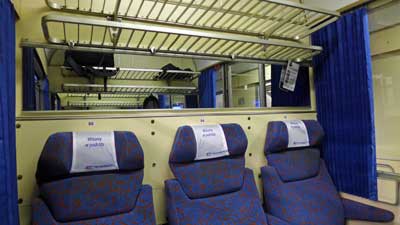
The good news is that the trains operating in this region, and the buses that operate alongside and/or where trains aren’t running, are quite cheap. So if any significant part of your trip will be into this region, a rail pass doesn’t make sense.
Basic types of Eurail Passes
Long gone are the days of the simple options, replaced by specialized passes that are meant to appeal to different styles. It should be pretty easy to figure out which is best for you, and then keep going down the page to decide if it’s worth it at all.
Eurail Global Pass – 4,5, or 7 days within 1 month or 10 days within 2 months
Until recently the minimum number of travel days with 10 days within 2 months, but now you can buy as few as 4 days within 1 month for about €200 to €250 (for first class). This can actually be an interesting strategy if you are planning many shorter and cheaper trips (like within Italy or Eastern Europe), and also 4 or 5 longer trips such as Berlin to Amsterdam. This way you can buy only 4 or 5 travel days and only use them for your most expensive travel days, and just pay as you go or buy cheap advance tickets for your other journeys.
Eurail Global Pass – 15 to 90 consecutive days
This variation allows for unlimited travel on the system for between 15 and 90 total days. They are really only a good idea for people who are certain they are going to travel very often, with much of it being in the north of Europe. The problem with them is that if you really try to get your money’s worth, you will probably ruin your trip by spending too much time on trains in general. On the other hand, if you will be in Europe for 2 or 3 months and plan on traveling around a lot, you can get a LOT of use out of a longer pass. The 3-month pass is around €900 so it’s literally about €10 per day. Imagine going back and forth between Berlin and Munich or Barcelona and Madrid for €10 per day!
One Country Pass
Obviously these are for travel within one country only. Again, they can be great deals if you plan on extensively moving around one particular country.
Where to buy your Eurail Pass
Eurail Passes are cheapest and easiest to buy online, primarily from two main sources which offer all the same products at the exact same prices:
This is a reliable company based in the Netherlands but with fulfillment offices in the US and Ireland. Price of Travel is a partner with this company, and if you use the links of this site we earn a small commission to help keep this site online. Eurail.com is usually cheaper than RailEurope (discussed below) by the way.
They were founded in the 1930s and are based in New York, but owned primarily by the French and Swiss rail companies. They offer free shipping (2 to 3 business days) on all orders of US$399 or more, although now that a mobile version is available, this is meaningless. Price of Travel is a partner with this company, and if you use the links of this site we earn a small commission to help keep this site online.
Reservations on European trains for rail pass holders
For most of the fastest trains between major cities you’ll need to reserve a seat even with a rail pass. It can usually be done just before you leave and the cost is usually around €5. Here’s a full list of which European trains require reservations and which don’t.
Reservations are required on all intercity (longer distance) trains in or involving France, Spain, Switzerland, and Italy. For most trains in Germany, Austria, Netherlands, Belgium, and most of eastern Europe, you can usually find trains that don’t require seat reservations. Often, if you don’t leave until after 9:30am or so, you can ride on any train with no seat reservation, but you have to research each leg to be sure.
How to determine which trains require seat reservations, and also get schedules
You can click on the link just above this section for a list of countries and their seat-reservation policies, but in some cases it’s actually a bit more complicated than that. For example, you can generally ride without a seat reservation on fast ICE (Inter City Express) trains in Germany if you depart after 09:30 in the morning. They do this to free up seats for business travelers who pay full fare, and they don’t mind filling up seats with rail pass holders on trains leaving a bit later.
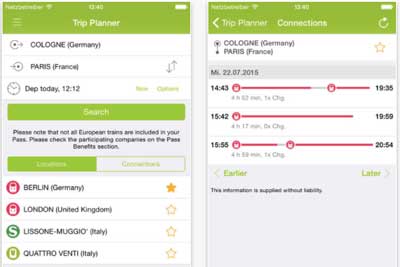
Night trains in Europe are making a comeback
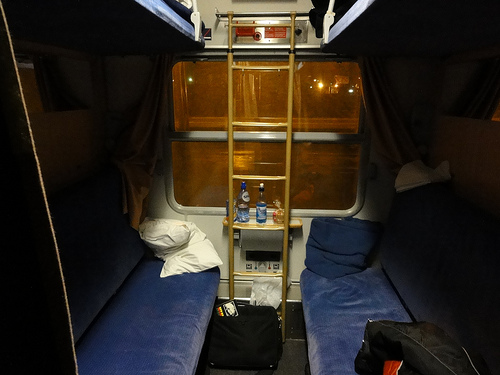
Fast forward to 2024 and night trains are not only expanding service, but they are very trendy. Some of it is nostalgia for the older way of getting around, but most of it is for environmental purposes combined with European hatred for the “low cost airline” experience with RyanAir and Easy Jet etc.
Personally I’m still not a fan of night trains because I find it difficult to sleep on them since they often get decoupled at interim stations in the middle of the night and then coupled onto other trains coming from other places, and I can’t sleep through any of that. But still, they are worth looking into and they are fun to try at least once.
A bit of warning that they tend not to be cheap and even if you have a Eurail Pass you’ll almost certainly want to book a sleeping cabin with a bunk or couchette, and that will come at an extra fee. On the other hand, if you are the sort of person who can sleep sitting upright in a normal seat, then that won’t cost any extra on most overnight trains.
Factors to consider when thinking about any Eurail Pass
Assuming you know which Eurail Saver Pass option is the best one for your type of trip by now, we’ll go over the main factors that should help you decide whether it’s the best idea for you.
Eurail Passes are best for standard ‘medium length’ journeys

However, if you are determined to travel between Rome and Paris, it’s about a 14-hour journey that will almost certainly be overnight. In this case, a cheap plane ticket is probably better, although taking shorter hops on the train is even better, so spend a day or two in Milan or Lyon on the way instead.
And of course, if you prefer to stop in various small towns between the big ones, then a Eurail Pass won’t pay off, except for the traditional kind for unlimited travel in a given period.
Eurail Passes are better value in northern Europe, France, and Spain, and poor value in Italy
Once you do a bit of research you’ll quickly learn that train tickets (and almost everything else) are much more expensive in Germany, Netherlands, Denmark, Sweden, Norway, and Finland than they are in Greece, Italy, Portugal, and Spain. With this in mind, the regional passes can make sense if you are spending time in the south, but the Global Passes almost certainly won’t. Train tickets in Spain used to be fairly cheap, but in recent years they’ve added new high-speed trains between the major cities, and these are quite expensive.
Unlike most other countries, Italy really subsidizes its train tickets so they are quite reasonable even on travel day, and very cheap if you buy a month or more in advance. For example, you can go between Rome and Florence for around €49 if you buy on travel day, and as little as €19 if you buy well in advance. In most other countries, fares are double or triple that much for similar rides.
So consider your planned itinerary. If more than half of it is in the Mediterranean countries then look into a Regional Pass or just buy tickets as you go, because they tend to be pretty cheap. But if you are planning on spending at least half your time in Paris and places to the north of it, then a Eurail Pass is probably a money saver because those tickets are expensive.
Trains are almost always better than planes
Flying sucks, even in Europe
Until you’ve experienced the joy of traveling around Europe by train you might be tempted to “maximize” your time by flying low-cost airlines between each city. This would be a mistake. In order to get truly cheap airfares you have to purchase long in advance, buying non-refundable tickets. You might also have to commit to flights in the very early morning or in the late evening, because cheap tickets on convenient flights sell out quickly.
And again, most European airports are around an hour outside of the city. They are often on the main train lines, which helps, but still you have to deal with the madness of security and also try to get there at least two hours early. From one city center to any other city center it’s about 5 hours minimum, even if they are close, and those are pretty miserable hours.
Train travel is a positive experience

Not only are all the seats comfortable on trains, but you also have an interesting view most of the time. Better still, trains deposit you in the heart of every city, which is usually the neighborhood with the cheapest hotels and food. It’s a wonderful feeling to step off a relaxing train ride, buy a hot dog or sandwich at a local shop, and then be in your hotel room only about 10 minutes later.
Eurail Passes are better than train tickets alone
As someone who enjoys the process of crunching numbers and looking for value, I have to also mention that I’d buy a Eurail Pass even if it seemed like it would cost a bit more than the individual tickets. With a pass you get an extra element of freedom that is worth a lot more than you might expect until you’ve used one.

Let’s say you are heading from Amsterdam to Hamburg tomorrow morning. The 09:00 train you planned for might seem a bit ambitious after a long night out, so you can instead opt for the 10:00 or 11:00 train. As long as you walk into Centraal Station 10 or so minutes before departure, you are on. If you are flying you can’t change your ticket, and if you are buying train tickets as you go you have to be in line at the international desk at the train station at least 30 minutes early, and even then you might miss it if they are busy.
Freedom and getting to feel like a big shot
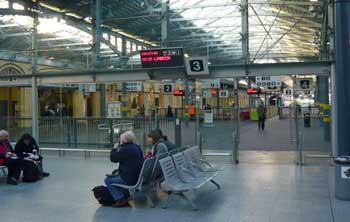
Let’s say you are staying at a hostel in Brussels, and two groups of new friends suggest that you go along with them to their next stops. One group is going to Bruges, which is a short and cheap journey, so you can join them by buying individual tickets (unless you have the unlimited pass, making it free). Then you restart your trip from Bruges, on to your next destination. The other group is headed to Berlin on a night train, which is long and expensive, but with a Eurail Pass you don’t even have to think about the cost. On you go, just like a rich person.
Buying a Eurail Pass is great for those who might run out of money
We all know people who keep meticulous track of every penny they spend, and who are always putting money away for a rainy day. And we all know people who can take a US$100 “entertainment fund” and burn through almost all of it in just a few hours. For the first type of person, a Eurail Pass can help you keep track of expenses, but it’s really the second type of person these are best for.
It’s sad to hear about people who have big plans to see their dream destinations, but they run out of money for transportation halfway into the trip, so they have to just stay put until they fly home. It happens. Locking in your major transportation costs before you leave home, and probably saving money in the process, is a wise move for anyone who isn’t as disciplined as they’d like with their money.
>>>Check prices on Eurail Passes
Bottom line: If you want to keep travel costs down, your choices will usually be a Eurail Pass or buying tickets at least a month or more early
In the last few years, almost every long-distance train ride in Europe has switched to a pricing system similar to low-cost airlines. In other words, tickets go on sale 2 to 6 months ahead of time at very low prices, and they keep getting more expensive as the train fills up and the date approaches. For most trips where a rail pass is possible, this is how things stack up:
Cheapest possible way: Buy advanced (non-refundable, non-changeable) train tickets at least 30 days in advance
Next cheapest way: Buy a Eurail Pass and make seat reservations as you go, usually only a day or less in advance.
Most expensive way: Buy train tickets as you go, or less than a week in advance.
Thinking about it this way should make the choice a bit easier. If you are the type who likes to plan each day and travel segment long before you even leave home, then buy tickets online for the best prices. This can be the best strategy for most shorter trips (10 days or less) because you simply don’t have enough time to change many things as you go anyway.
Buying a Eurail Pass won’t be quite as cheap, but you are buying a LOT of flexibility with the extra money. If you dream of making up your plans as you go, or even making up your plans just a few days in advance, this is almost always your best bet.
But if you wait too long, and just show up looking to buy train tickets as you go, they are going to cost a fortune. As recently as only a few years ago all seats would be the same price on many rail systems, so you could always just wing it. When each country computerized its rail systems so they can sell advanced tickets cheaper, they also had to keep track of seat reservations, so the whole pricing structure had changed to favor advanced ticket buyers and rail pass holders over those who’d prefer to just hop on any train as it is leaving the station.
Have a rail pass or itinerary question of your own?
It wasn’t planned but scores of people began asking me rail pass and itinerary questions at the bottom of this article and a few others. I’m happy to keep answering them and now I’m trying to organize them better as well so they are easier for other people to find.
If you have a question about specific types of European rail passes, please ask it in the comments below.
But if you have a question more about a European itinerary or other non-rail-pass questions, please click over to the European itineraries Q & A article and ask in the comments of that one.

You are a travelbug’s treasure! Thank you for providing so much valuable information. You better have a book in the works?
I’ll be arriving in London on March 16 with my two kids, aged 5 and 8, with two months to hang out in Europe and no real itinerary or pressing places to be other than Prague (to meet my partner) at some point.
From all of your information (and my foggy brain, sorry), I understand this:
1. We will pay for the London-Paris train, with a 25% discount with a Eurail Pass.
2. We will continue to pay for travel within France.
3. Even though Eastern Europe is not ideal for the Eurail Pass, we could still put it to good use.
4. We don’t want to spend time in the more expensive countries, but that should be okay with the Eurail Pass.
5. If I want the flexibility of the not planning ground travel much in advance (especially with two little kids in tow), then we should get a Pass.
6. We should get the 2 month pass with no limits to travel days.
7. With the Family option, we’ll get one child’s pass for free.
Yes? No?
How many did I get wrong? 🙂
I would very much appreciate your wise blessing, so to speak, before I go ahead and buy the passes.
Happy (nearly) New Year!
Carrie
Carrie,
Thank you. There is no book in the works, but this website keeps growing and is sort of like a book that I can keep updating. On to your questions…
1. Yes, book the Eurostar as early as possible for the best fares and choice of departure times. And if you have a Eurail Pass you’ll get a discount.
2. On most popular high-speed trains in France you’ll have to pay for seat reservations, and those usually run €20 to €30 or so. But on some trains you won’t need reservations. It depends on where you are going and how fast you want to get there.
3. The trains in Czech Republic, Poland, Hungary, Serbia, and Croatia are slow compared to the Western countries, but the trains are comfortable and enjoyable. You’ll get good use out of your rail pass, as long as you are aware of the options. There are no trains in a few places where you might assume there were.
4. Again, if you are getting a Eurail Pass at a good price then using it in cheaper countries will still work. The trains in the cheaper countries tend to be cheap as well, so the pass might not be the best deal depending on where you go.
5. Exactly. The best feature of rail passes is the ability to make plans as you go. Even if you don’t save a lot of money with a rail pass, that freedom can be worth a LOT.
6. If you’ll be taking trains at least every 3 or 4 days then the 2-month Continuous can be a great deal. But the 10 or 15 Days in 2 months can be better value for many people because you only use them on the expensive trains and if you are going on a cheap train you can just pay as you go or even take buses in some cases. Again, it really depends on how often you’ll use it.
7. Yes, that’s right.
Let me know if you have any other questions. -Roger
Hi Roger,
My wife and I (and two children) are planning an August vacation in Europe: Paris, Bern & surrounds, Berlin, Amsterdam, London. About 4 days in each location with 1 travel day in between. Our itinerary isnt exactly, ‘set’, but is solid, based on lodgings. I’m leaning towards a Eurail pass, based mainly on the convenience and flexibility. However, it seems, from what I’ve read, that maybe the advanced tickets would be less expensive, especially given that we’ll be in London and Switzerland for a little less than half of our vacation. Thank you for any comment/advice you can provide.
I’ve both enjoyed and appreciated reading your comments and advice on the site. It is expecially impressive seeing that you’ve been at this since at least 2012!
Thanks!
Jeff,
I’ve been running this site since early 2010, actually, and answering questions on some articles since then. It’s a full-time job and I enjoy helping when I can.
As you suspect, a Eurail Pass isn’t really well suited to a trip like yours. The Eurostar to London is a private system and not part of Eurail, although you can get a 25% discount on the Eurostar ticket if you bought a Eurail Pass from the same place.
Really, if you buy your train tickets about 2 to 3 months in advance, they will add up to much less than a Eurail Pass. As I’ve mentioned, a Eurail Pass is mainly best for those who are doing longer trips and want to make plans as they go. Those last-minute train tickets can be very expensive, but the advance-purchase ones are often half the price or less. Pick dates about 10 weeks from now and check the fares for your route on the official rail websites of the countries involved. Or you might be able to check them all on bahn.com, which is the German site. You’ll find that the fares are pretty cheap, and you should be able to get similar fares if you book shortly after they go on sale, which is usually 3 to 4 months out.
The only exception is the domestic trains in Switzerland, which go on sale 30 days out and are always the same price. Fortunately, the distances within Switzerland between the main tourist cities are pretty short, so the fares are pretty reasonable. Sometimes they have “Saver fares” but usually you just pay the normal price. If they don’t have any discounts then you can buy those tickets once you get there.
Let me know if you have any other questions. -Roger
Hi Roger,
Love your site! My wife and I are planning a two week trip to Europe next summer in July. We are thinking about Amsterdam, Germany (Frankfurt, Heidelberg, Munich), then Switzerland (Interlaken and the local spots you mentioned). Do you think this is too ambitious? I was thinking we spend about a week in Germany and split the rest of the time between Amsterdam and Switzerland. After reading what you previously wrote I’m assuming regular train tickets would be cheaper than getting a Eurail Pass, even with the 20% discount they have right now. One last question, would it be better to fly into the Netherlands or Germany? What would be the best starting point? We are coming from the U.S. Thanks in advance!
– Dan
Daniel,
Thank you. I’d recommend flying into Amsterdam and spending 3 nights there, and then heading south through Germany, and then into Switzerland. You can probably get a good fare flying into Amsterdam and out of Zurich, but if not you could get a cheap one-way flight between them and buy a round-trip.
Generally speaking, I recommend 3 nights in almost any city in Europe, so in 14 days you could do maybe 5 cities. A smaller town such as Heidelberg could be done in 2 nights, as can Interlaken or Lucerne in Switzerland if you are in a hurry. For the record, I really don’t recommend Frankfurt at all, unless there are some specific things you already have in mind. Have a look at my article about where to go in Germany for the longer explanation. You’ll see in that article that there are two really good stops near Munich that can each be done in one day or so.
If you are in a hurry I think I’d recommend 3 nights in Amsterdam and 3 nights in Interlaken at the end. That would give you 8 nights in Germany. Berlin is really the top highlight in Germany for most people, although Munich is also really interesting and very different. But of course you should visit the places that sound most interesting to you, and Germany has a lot to offer in different spots.
And yes, if you have a fixed schedule like this, then buying tickets online about 2 months in advance will be cheaper than a rail pass. Those advance tickets can be surprisingly cheap, and really the best thing about Eurail Passes is the ability to make up plans as you go. Let me know if you have any more questions. -Roger
Hi Roger,
Thanks for the reply and the great information. Berlin looks great too but it’s just a bit too far from the other places we would like to visit. We decided to fly into Amsterdam and avoid Frankfurt. I only thought to stay there because some of the towns of the Rhine Valley are close to there. I do have a few follow up questions if you have the time. Which Rhine Valley town would you suggest we stay at for a 2 days? Bacharach seems nice. We would like to take 2 days or so to visit one of these towns or two if possible. We would also like to see Rothenburg, even though it’s usually full of tourists. Should we stay in Rothenburg for a day or two or just do a day trip to it from Munich? We heard a lot of good things about the Romantic Road and getting to Rothenburg by bus seems like a nice way to go. Also, we are considering Austria instead of Switzerland, it seems as if we can visit Salzburg as a day trip from Munich. Do you think this is wise or is Switzerland too nice to pass up?
Is there any other city or town along our route that may be worth stopping by? We’re looking for scenic, medieval/rustic places with good food/wine/beer and fun activities.
So to recap, this is what we have so far itinerary wise:
– Amsterdam (3 days)
– Rhine Valley towns (2-3 days)
– Rothenburg (1 day)
– Munich/Salzburg (4 days)
Looking forward to hearing your thoughts. Thanks in advance.
Daniel,
I’m not a true expert on the Rhine Valley. I have done one of those Romantic Road bus tours and it was nice, but not a blockbuster. And I’ve done a short Rhine cruise for a few hours and that was really nice because you see so many castles and other scenery. I’ve also spent a night in Rothenburg ob der Tauber and absolutely loved it. The town is small, but it’s one of those like Venice where it can be so crowded during the day with day-trippers that it feels over-loved. And then by 6pm when all the day-trippers have gone, you are among a small number of visitors with the whole gorgeous town almost to yourself. I highly recommend it. I haven’t been to Bacharach, although that one looks nice as well.
Another thing I can say about Germany is that the destinations that attract foreign visitors are MUCH easier to deal with unless you speak German. I actually do speak some German (my family is from there and my brother lives there), and when I get off the beaten path it can be tough. For example, Freiburg is the main town of the Black Forest, and it attracts many German and Swiss visitors, but few non-German speakers. As a result, even things like museum displays are only in German and only the younger generation can speak English. I hope that helps.
Salzburg is a really wonderful town and you can do a nice visit in one day from Munich. You’d love it, even more so if you stay for 1 or 2 nights. That said, Switzerland blows it away when it comes to scenery, with the Interlaken area being best and easiest to visit. Switzerland also requires at least 2 nights to make it worthwhile, and it’s very expensive. The choice is yours.
I think your itinerary looks good. Again, I’m not exactly sure where is the best place to visit in the Rhine Valley, though I do think that staying out of Frankfurt is wise because it lacks charm. You might also consider a Rick Steves guidebook for Germany or a visit to his website. His advice is extremely solid on things like this. Have a great trip. -Roger
Roger,
I have started planning a trip to Europe for my and my family (Wife & 2 daughters (18 & 24). We will arrive from the US in Paris on Aug 27. We immediately want to head to Pamplona, Spain to visit an exchange student we had hosted. We plan on staying there for 5 – 6 days minimum. We then want to head to Madrid for a couple of days. I am not sure where I should plan to go from there yet. I was thinking of going to Italy and places around France and possible Amsterdam if I can fit it in. I want to end back in Paris a couple of days before our flight home on Sept 24th.This trip is a total of 30 days. Which rail pass would be right for us. Also where would you recommend we visit after leaving Madrid to get us back to Paris for our flight home. – Mike
Mike,
First off, you could consider a Global Flexi Pass with anywhere from 5 to maybe 8 rides in 2 months. That would allow you to hop on almost any train in Europe for a reasonable pre-paid price for that number of trips while you are there. Eurail Passes are ideal for people who want to make plans as they go because they allow that kind of flexibility.
However, if you do decide on an itinerary before you leave home, it would actually be cheaper to buy those train tickets online in advance instead. If you buy these tickets around 2 months in advance, you can get promotional fares that will certainly add up to less than the cost of a Eurail Pass. So it really depends on how you want the trip to go.
As for the itinerary, you have many great options. It sounds like you have about 3 weeks after leaving Madrid until you fly home from Paris. I’d recommend 3 nights in Madrid and either 3 or 4 nights in Paris at the end. That leaves you with around 16 or 17 days. After Madrid I would definitely recommend a train to Barcelona for 3 nights. It’s a wonderful and large city that is very different from Madrid, so it’s worth seeing both.
The tricky part is what you do from there. You could either take a train to Nice for 2 or 3 days (including day trips to Monaco and Cannes) and then another train to Milan or Venice and then down to Florence and Rome. I recommend 1 optional night in Milan, 1 night in Venice (it’s a small and very crowded city so a short visit is ideal), then 2 or 3 nights in Florence and 3 nights in Rome. From there you could fly to Amsterdam for 3 nights and then take the train to Paris for the remainder of your stay. That would be an excellent itinerary filled with highlights.
The individual train tickets within Italy are fairly cheap even if you buy on travel day, and very cheap if you buy a month or two in advance, so a Eurail Pass would not be good value there. And in France you have to pay about €20 or €30 for a seat reservation on the popular high-speed trains even with a pass, so it’s not great value there either.
Another option would be to go from Madrid to Valencia, which is another wonderful and different city, and then to Barcelona. If you wanted to save Italy for another trip you could make some other stops in France and then a stop or two in Germany on your way to Amsterdam, and then down to Paris for those final few days. I hope this helps. Let me know if you have any other questions. -Roger
Hi rodger My wife and I are over 70 and intend to cruise from buderpest to Amsterdam in may 2017 we intend to travel from Amsterdam by train to paris overa 4week period visiting Rotterdam.brussels, brugges ,western front rohan and and a week in paris from there we fly to amman what sort of rail pass would you suggest rod
Rod,
It sounds like you are asking about rail travel from Amsterdam to Paris over a month, with many stops in between. If that’s the case then a rail pass won’t be helpful. The good news is that the rail fares on those short journeys that you’ll be taking are all fairly low. For example, Brussels to Bruge/Brugges takes an hour on a suburban train that leaves every 30 minutes and costs about €14 each way. Some of your trips will be a bit more expensive than that, but several will be around that price including Amsterdam to Rotterdam.
The long-distance high-speed trains can be expensive if you book at the last minute, but the fares on those short journeys tend to be the same, or always reasonable, even if you book just before the train departs. Let me know if you have any other questions. -Roger
Hi there, I’m planning a Europe trip over July – August 2017 and need some advice. I’m doing group tours and Busabout for some parts of the trip but will need to catch a train from Vienna to Budapest and then was thinking of using the train system to get around whilst in Switzerland. All up it would be about 5 days of travel within 2 months. I’m wondering what would be best:
1) Purchase one pass, e.g. Eurail Select 3 Country Pass (Austria, Hungary, Switzerland)
2) Purchase a Swiss Travel Pass ( 4 days flexible pass) and then purchase the Vienna – Budapest train seperate.
Not sure if the Eurail pass covers all the trains within Switzerland, e.g. to cities such as Bern, Interlaken and Lucerne.
Appreciate any advice!
Naomi,
If your train rides will only be Vienna to Budapest and then within Switzerland, you are almost certainly best off buying them individually, as far in advance as you can. Here’s the thing, Eurail Passes are great for longer trips where you are going through expensive countries and you want the flexibility to make plans as you go. Those train trips you have in mind will all be relatively cheap compared to the cost of a rail pass.
And the Swiss Travel Pass in particular is an unusual one in that it’s geared towards people who will be doing at least two of the longer scenic trains within Switzerland, and also at least a couple of the more expensive cable cars or cogwheel trains. If that is what you have in mind, where you spend most of the day on the train for two days and the other days going up Mt Rigi and Jungfraujoch and Schilthorn, then the Swiss Travel Pass could be ideal. But if you want to take a train from Zurich to Interlaken and to Lucerne and that sort of thing, the individual train tickets are fairly cheap.
Let me know if you have any other questions. -Roger
Hey there,
So my girlfriend and I are planning on backpacking Europe Jan. 11 to March 1, and we’re trying to figure out whether its a smart call to get a Eurail pass. We’re both under 26 so we can get the youth pass. We’re flying into London on Jan. 11 from the US. Here’s our (rough) itinerary:
Jan. 11 -15 – London
Jan. 16 – 23 – Paris
Jan 24 – 29 – Madrid
Jan 30 – Feb 2 – Zermatt
Feb 3 – Feb 13 – Rome/Venice
Feb 14 – 16 – Southern Germany
Feb 17 – 24 – Berlin
Feb 25 – March 1 – Stockholm or Amsterdam
Any advice you could give on best travel options would be much appreciated! We’re deffinetly traveling on a budget and booking a bunch of trains seems tricky.
Thanks,
Russell
Russell,
First off, you are probably aware that you’ll want to take the Eurostar from London to Paris, and it’s not part of Eurail, although you can get a discount on your ticket with a Eurail Pass.
I do think a Eurail Pass would be really helpful on this trip, especially since you can get the Youth version and the 20% discount right now. Four days in London is ideal, but after that you are planning some really long stays. With that in mind, you could easily squeeze a few more cities in, and with a Eurail Pass it would be cheap to get there.
You’ve got 8 days in Paris, and most people are able to see the main Paris highlights in 4 days. You’ll love it there and I’m sure you won’t actually get bored, but you will probably experience diminishing marginal returns starting on Day 5 or so. In other words, four days in Paris and four days in Barcelona will be more entertaining than 8 days in Paris.
Also, Switzerland is an amazing country for Alpine sightseeing, but Zermatt is mainly a ski resort that happens to have one incredible view of the Matterhorn. You might scan my article on where to go in Switzerland and consider the Interlaken area and Lucerne as well as an alternative.
The best thing about a Eurail Pass is that it allows you to make plans as you go. And on a 7-week trip that time of year, it would be incredible to have that flexibility. It will be cold in Europe that time of year, of course, so you can move around to avoid storms or head to warmer places if you like. You could get one of the Flexi-passes with maybe 8 rides in 2 months, and then use them only on your more expensive journeys. For example, a train from Venice to Florence and from Florence to Rome might cost around €20 if you buy a bit in advance, or only €50 if you buy just before the train leaves. So you probably don’t want to use a rail pass on those, but a last-minute ticket from Berlin to Amsterdam or Stockholm might be €150, so a rail pass is great for that sort of thing.
Let me know if you have any other questions and I’ll be happy to help. -Roger
Hi Roger
Its great that you still updating the original post and keeping the information current! Anyhow, im hoping you can help with advice with the Scandinavian rail pass. My friend and i will be arriving into either Oslo or Bergan and plan to see some of the best fjords in July 2017 that Norway has to offer (also planning 4 nights on Lofetan Island). We are still working out how to get to these places (train, plane or ferry)
After Norway, im planning on leaving my friend and make my way done to Stockholm and then Copenhagen. Im thinking by train for those two countries, but open to cheap low cost airfares.
Would the Scandinavian eurail pass be of benefit to me? Or if i buy my point to point rail tickets in advance, will that be cheaper?
Appreciate any advice you can give me!
Thanks in advance
Andrew,
I’m happy to help. In my experience, those Scandinavian rail passes are quite expensive, but so are last-minute train fares. The good news is that those countries all offer “supersaver” rail fares that are strangely cheap if you can buy them at least a month or two in advance. So the cheapest way would be if you could buy advanced train tickets. If you REALLY want to be able to make plans as you go, a rail pass would be cheaper than last-minute train fares. But really, in that area I’d go for advanced fares because it’s not really a place where you’ll spontaneously want to head to some obscure city, as you might in central or southern Europe.
And fortunately, they do have some pretty cheap airfares in that area, especially if you can book in advance. I’d consider flying for any trip that would take 6 hours or more by rail. The trains there are nice and the scenery is mostly very good, so I wouldn’t advise flying unless it was MUCH cheaper or the train took much too long. They only put train tickets on sale like 3 or 4 months in advance, so you can check fares for early December right now and those are about what you’d be seeing 3 months before you go.
I love that area and I’m sure this is going to be a great trip. Let me know if you have any other questions. -Roger
Thanks for your inputs Roger. Below is the first cut of my itinerary:
[Land in London]
– London – 3 days
– Oxford – day trip from London
– Bath – day trip from London
– York – 1 day
– Edinburgh – 3 days
– Inverness – 2 days
– Isle of Skye – day trip from Inverness or spend 2 days
– Glasgow – 2 days
[Leave for Cairnryan and take ferry to Belfast]
– Belfast – 3 days
– Dublin – 2 days
– Galway – 2 days
– Cliffs of Moher – 1 day
– Kilarney – 2 days
[Leave for Dublin to catch flight to Cardiff]
– Cardiff – 2 days
– Tenby – 2 days
[Return to London from Tenby via Cardiff]
Please let me know your thoughts, in case you think I am spending too much or too little time in any place (you may have noticed that I have removed Bristol and Snowdonia from this list as it was getting a bit too hectic to cover everything).
A couple of further queries:
– Should I plan to stay in Isle of Skye or do a day trip from Inverness? If the former, what should be my base town? Portree?
– My Scotland itinerary may need some re-jigging as I want to find the best possible way to reach Belfast after I visit all the places on my list in the country. Any suggestions on train, bus or ferry routes will be much appreciated.
– What are the options to reach Cardiff from Ireland? Do I need to go back to Dublin from Kilarney to catch a flight?
Regards,
Raman
Raman,
I think your itinerary looks fantastic and very well planned. This trip will be the opposite of relaxing, but as long as you are prepared to keep moving even when you are feeling a bit worn out, you can pull this off as planned. I’ve done a few trips at this pace and halfway through I wonder what I was thinking when I planned to move so quickly, but in the end you DO end up seeing and doing a lot, and you can catch up on sleep when you get home.
As for Skye, I did it as a daytime coach trip from Inverness and that was really nice. The island is very scenic with little villages here and there, and it’s really best explored on the roads. So if you spent a night or two in one of those small towns, you’d really only get to see that town, or maybe take a local bus to another town. So do the bus trip and you’ll see most of it in one day.
Your Scotland itinerary looks good. One other thing you could do to streamline it a bit is to explore Glasgow as one day trip from Edinburgh. The train takes 51 minutes between them and you can really see the city center and main highlights of Glasgow in 6 hours or so. Edinburgh is far more charming and tourist-friendly, but Glasgow is also interesting and has an impressive town center. Doing it as a day trip would cut down on more packing and unpacking.
For all of your trip in Britain I’d recommend trains wherever they are affordable, and buses when they are much cheaper than trains. The earlier you buy your train tickets, the cheaper they will be. The same is true of some bus tickets, although it’s easier to get a cheap one on travel day if you need to. This site is the one I usually use for trains. For buses you can just google the route and you’ll see the companies that go there.
There is a ferry between Ireland and Britain, which I’ve yet to take, partly because it takes a long time when you factor in getting to the port city and getting out of the port city on the other side. I’m pretty sure that flying will be much faster and probably cheaper as well. From Killarney you’ll be much closer to Shannon Airport, which actually has lower fares than Dublin Airport in most cases. If you book Shannon to one of the British airports early, it should be quite cheap. You might get a better deal flying into another airport and then a train to Cardiff, but hopefully you can find a cheap flight into Cardiff itself. Have an excellent trip. -Roger
Hello Roger! I’m back! haha Our itinerary is all set now and we took your advice. We will be travelling to Amsterdam-Berlin-Prague-Munich-Venice-Florence-Rome. So thank you for that. Now our next problem is when and where should we book our train tickets (reservation) using our Eurail Global pass. I tried reserving seats at http://www.Raileurope.com where we purchased our global pass from but the trains going to Berlin from Amsterdam is not showing up on that site. Should we reserve our tickets at http://www.Bahn.de on all of our train rides going to all of the countries we’re travelling to? Is it possible to reserve tickets using that site or should we just go to the train stations to reserve when we arrive in Europe? Also, do we really need to reserve tickets given that we already have a global pass? I’m just worried that if we don’t reserve at an earlier date we might run out of seats. Please do advise us on what we should. It would really help us a lot since we don’t know how the rail system works in Europe and it’s really confusing since there are a lot of websites to book from. Thank you as always Roger. God speed!
Regards,
Jonathan
Jonathan,
Good to hear from you again, and I think your itinerary sounds great. As far as I’m aware, if you buy a Eurail Pass through Rail Europe, you can also buy your seat reservations on that site. You don’t mention when your trip will be, which may be part of it. You can only make seat reservations a certain amount of time in advance, which is 3 months in some cases and only 1 month in others.
One thing I’ll recommend is to get the free Rail Europe smartphone app (ios and Android), which has all of the train schedules in Europe built into it, even if you are offline. You can look up any train route on any day and it’ll not only give you the schedules, but it will tell you whether it’s “reservation compulsory” (reservation mandatory). I just checked and you won’t need a reservation from Amsterdam to Berlin or to Prague, but on the trains to Munich, the faster ones require a reservation. And from Munich onward you’ll need seat reservations because all fast intercity trains in Italy require them (although local trains don’t).
If I were you I’d just get my seat reservations at the train station on the day you get to that city, or the day before you want to leave. The only trains where the seats can sell out on a regular basis are the ones that are taken by business travelers. So any intercity train leaving before 9am, especially in 1st Class, is likely to be crowded. And Monday morning and Friday afternoon trains are typically the most crowded. Partly for that reason, I prefer to leave at 9:30am or a bit later. Not only does it give me a chance to get breakfast and check out without rushing, but the trains are always less crowded.
So you can get the Prague to Munich reservation at the station in Berlin or Prague, and it should cost €5 each. You might be able to get all the seat reservations at any station, but I haven’t tried that myself. I know it seems mysterious before you’ve done it once, but it’s pretty easy after the first time, and riding the trains is very enjoyable and stress free (as long as you get on the right one.) As always, let me know if you have any other questions. -Roger
Good day Roger! As always, thank you for the tips/advice you have given us. I’ll keep that in mind. I tried going to bahn.com and it seems like I can reserve tickets there as well. If ever we need to reserve tickets do you think that the train stations will honor the reservations from that website? Again, thank you and God bless!
Jonathan,
It’s good to know that Bahn.com offers seat reservations to rail pass holders. They all use one centralized system for train tickets and reservations and such, but not all countries and ticket sellers seem to be able to cross borders. The good news is that Bahn.com (or Bahn.de, which goes to the same place) is the enormous national train company of Germany. They have been the best at cross-border tickets and reservations since the system became computerized in the 1990s or early 2000s, probably because they are the largest system in Europe and have agreements with all the neighboring countries.
By the way, RailEurope.com is owned by the France and Swiss railways, so it’s really the same sort of operation. In other words, bahn.com is 100% legit and if they sell you a ticket or reservation, it will be accepted for sure. Have a great trip. -Roger
Hi Roger
Hope you are doing well. Firstly I would like to thank you for your valuable inputs, which helped me execute my trip to Germany and Czech Republic this summer.
I am currently planning a month long trip to the British Isles from mid of Sep to mid of Oct. I must admit I haven’t done a lot of research at this stage. Other than a rough idea of spending around 5 days in London, I am yet to finalize the rest and was hoping for some guidance from you. Along the lines of your article covering “where to go in Germany”, is there any article for these countries that I can refer to? My preliminary list includes the following:
England: London, Bristol, Bath and maybe Lake District, Oxford and York
Scotland: Edinburgh, Glasgow, Inverness, Isle of Skye and if time permits a small stretch along the North Coast 500
Wales: Cardiff and Snowdonia
Northern Ireland: Belfast and [ ]?
Ireland: Galway, Kilarney, Cliffs of Moher and Dublin
Regards,
Neo
Neo,
I’m always happy to hear that my advice has been helpful. I actually plan on writing a similar article for where to go in Britain, but I need to make a couple more stops first. I’m based in London at the moment, for a few more months.
I can give you a bit of quick advice though. Your list looks really good and I’m impressed that you’ve included pretty much every one of the highlights. Bristol is nice and the hotels are cheaper than in nearby Bath, but Bath is really the main attraction there, so don’t plan on spending more than a day or two in Bristol. And Bath is quite small, so 1 or 2 days there is fine.
I spent a few days in a Lake District town called Windermere a few years ago, and I wasn’t too impressed. I think the Lake District is a nice place for English people to go for a weekend or a week to get out of the city, but I think it’s a disappointment for foreign visitors.
Your Scotland itinerary looks great. Edinburgh is more dramatic and tourist-friendly than Glasgow, but Glasgow is surprisingly nice and photogenic, so I think maybe 2 days there is worthwhile. You can base yourself in Inverness and do a day trip to the Isle of Skye and other places in the Highlands.
Cardiff is the most interesting city in Wales, so it’s worth a stop. On the north coast you might also consider Llandudno and the tiny town of Conwy. Snowdonia is the tallest mountain in Wales, though compared to mountains in many other countries, it’s kind of plain.
I’ve yet to make it to Northern Ireland, so Belfast is the obvious choice and people say it’s interesting. Your Ireland choices look great as well. Dublin is kind of disappointing compared to the countryside and smaller towns in Ireland, so don’t plan more than 2 days in the capital. The rest of the country is fantastic, and Galway and Kilarney are both good stops. Let me know if you have any more questions. -Roger